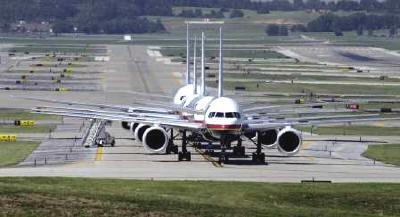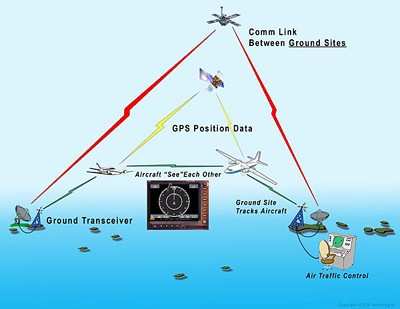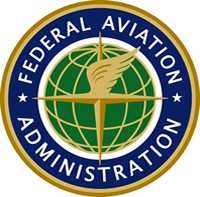Good morning, and thank you, Chairman Rockefeller. It is a
pleasure to address you, Senator Lott and the members of this
subcommittee.
What brings me here before you this morning is a matter of
national significance; indeed, a scenario that affects every man,
woman and child in this great nation, that affects every business
-- from blue chips to the corner store.
 The common thread among each of
these is aviation. The United States of America has long depended
on aviation, not just as a means of point-to-point travel, but as
the hinge on which the door of commerce depends to stay open.
Literally, aviation keeps America open for business.
The common thread among each of
these is aviation. The United States of America has long depended
on aviation, not just as a means of point-to-point travel, but as
the hinge on which the door of commerce depends to stay open.
Literally, aviation keeps America open for business.
As you are well aware, the national airspace system is rapidly
approaching critical mass. For years, the word
“gridlock” has been bandied about. For years, experts
have pointed to a system that is stretched too thin, a system that
simply won’t be able to accommodate all those looking to use
it.
That day is here. As passengers, we know, and not just from
headlines, that 2006 was the worst in history for delays.
Conversely, that high point for delays occurred simultaneously with
what can only be described as the golden age of safety.
Our pilots are first rate. Our controllers are the envy of the
world. The people who service our equipment are acknowledged
experts capable of handling everything from the devastation of a
hurricane to a sophisticated software upgrade. Our safety
inspectors are so good that they’ve helped whittle away the
list of accident causes to the point where they almost never
happen.
And yet, amazingly, the system is in trouble. It is grossly
inefficient, and everyone who flies it knows it. The system’s
in trouble because we have squeezed every ounce of capacity
that’s out there. In some cases, we have imposed artificial
constraints, for example in places like Chicago and New York,
trying to stem the stream of passenger jets that always want to
take off at 7 in the morning and come home at 5 in the evening and
usually on the same day. Schedules packed to the gills with delays,
missed connections and cancelled flights are an all-too-common
scene these days.

And in front of us? The undeniable fact is that we face a
billion passengers by 2015. We face an ever-increasing number of
very light business jets, with new models like the Eclipse and the
Diamond D on the way. Traffic levels we face now will double --
perhaps even triple -- in the not-too-distant future.
The logical question that follows goes like this: If we have the
best people and the safest planes, why don’t we have the best
system? The question from the passenger who flies in the middle
seat is a bit more pointed: Why is commercial travel becoming such
a nightmare?
I’m here today to tell members of this committee that the
band aid solutions of the past will not be enough to deal with this
challenge. We can’t keep trying to scale up an air traffic
control system based largely on technology from the 1960s. We need
to take bold action, and with the taxes and user fees expiring in
September, we have a once in a decade opportunity. The next 6
months are the pivot point. If other countries around the world are
moving toward the system of the future, why can’t we?
Aviation is just too critical for Americans to be satisfied with
taking a back seat.

Fortunately, there is good news on the horizon. We know the
answer to the challenge that brings us here today. America needs
the Next Generation Air Transportation System. Without it, we will
cease to set the pace for global aviation. We will be the country
others use as a lessons-learned exercise, the country that could
identify its problem but couldn’t fix it.
In layman’s terms, NextGen is an integrated plan utilizing
modern technology, updated procedures and new equipment to take us
beyond ground-based radar technology and into the second century of
aviation with satellite-based operations. Let’s face it.
Satellite technology has revolutionized the trucking industry.
Trains use it. Fishermen use it. Hikers in our national parks even
use satellites. Isn’t it about time we put this technology
into the hands of our pilots and controllers?
Make no mistake; this is not pie-in-sky. We have a clear vision
for NextGen and a plan to execute it. Both were developed in
partnership with stakeholders from across the spectrum of aviation,
from pilots and airlines to mechanics to Wall Street and beyond.
They agree. We agree. NextGen will get us where aviation needs to
go, but we need to act quickly if we hope to avoid that doomsday
scenario.
Why is this so important, you might ask? Countries like China,
India, and Australia are aggressively adopting satellite
technologies. Europe is moving ahead with SESAR, its rival version
of NextGen that is based on satellites. Fact is the rest of the
world isn’t waiting for the United States.
 And while the rest of the
world has their action plan in high gear, we risk getting bogged
down in a debate over who’s going to pick up the tab. Truth
be told, right now, the passenger in the middle seat is footing the
lion’s share of the bill for operation of the system. The
commercial traveler is paying 95 percent of the cost but imposing
only 73 percent of the requirements. Imagine a restaurant that
required you to pick up the tab for the people sitting at the next
table. It’s not as farfetched as it sounds. It happens in our
skies every day. A seat on a commercial jetliner is the most
heavily taxed spot in all of aviation.
And while the rest of the
world has their action plan in high gear, we risk getting bogged
down in a debate over who’s going to pick up the tab. Truth
be told, right now, the passenger in the middle seat is footing the
lion’s share of the bill for operation of the system. The
commercial traveler is paying 95 percent of the cost but imposing
only 73 percent of the requirements. Imagine a restaurant that
required you to pick up the tab for the people sitting at the next
table. It’s not as farfetched as it sounds. It happens in our
skies every day. A seat on a commercial jetliner is the most
heavily taxed spot in all of aviation.
This year is a once-in-a-lifetime opportunity, presenting a rare
chance to leave an extraordinary legacy for our children. But to
successfully develop that NextGen system, we need a revenue stream
that’s tied to the actual cost of our operations. We need a
revenue stream that’s equitable; in other words, all users
pay their fair share. I can’t say it any more clearly. The
hybrid financing system we put on the table yesterday is balanced,
is fair and it delivers on all these counts.
A cost based system is much more transparent and accountable --
for the FAA, the passengers, users -- and it gives Congress more
insight into our costs for oversight.
Despite all the hype you’ve undoubtedly been hearing,
moving to a user fee system is hardly unprecedented. In fact, I
mentioned several countries before, but here’s another list
to think about: Barbados, Brunei, Guinea-Bisau, Kiribati, Kuwait,
Namibia, Sao Tome & Principe, Swaziland, Togo, Tuvalu. That
list represents the only countries that do not charge for the
actual cost of ATC services. Do we really want to most powerful
nation on earth to remain on that list?
Speaking on behalf of everyone who flies this is first and
foremost about benefits to the passenger. The bill that’s
moving forward reduces congestion. It alleviates delays. It
provides tax relief. It’s green. And make no mistake -- it
delivers the technology to make all of this happen. This is the
only way to go. America has the opportunity. America has the
solution. We just need to put it in motion.
In closing, let me say that we have been presented with an
historic opportunity to alter the future of aviation by creating a
Next Generation system that truly delivers. We owe it to the
traveling public. We owe it to America. Our economy hinges on
aviation, and we can ill-afford to blow this chance to give our
citizens a system that can handle what the future may bring and
avoid all that gridlock. The members of this subcommittee will be
key players in this endeavor, and I look forward to working with
you to make it happen.
 ANN's Daily Aero-Linx (05.06.25)
ANN's Daily Aero-Linx (05.06.25) ANN's Daily Aero-Term (05.06.25): Ultrahigh Frequency (UHF)
ANN's Daily Aero-Term (05.06.25): Ultrahigh Frequency (UHF) ANN FAQ: Q&A 101
ANN FAQ: Q&A 101 Classic Aero-TV: Virtual Reality Painting--PPG Leverages Technology for Training
Classic Aero-TV: Virtual Reality Painting--PPG Leverages Technology for Training Airborne 05.02.25: Joby Crewed Milestone, Diamond Club, Canadian Pilot Insurance
Airborne 05.02.25: Joby Crewed Milestone, Diamond Club, Canadian Pilot Insurance







